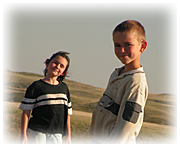Belfast Background
Geography and History
Northern Ireland occupies the northeastern corner of the island of Ireland. It takes up about one-sixth of the island and is made up of six counties. In the early 1920s, this area was separated from the rest of Ireland. Along with England, Scotland and Wales, Northern Ireland is part of the United Kingdom. It is slightly larger than the state of Connecticut, comprising 5,462 square miles. It is 85 miles long and 111 miles wide. The average summertime temperature in Northern Ireland is about 65°F and in wintertime the temperature is between 25-40°F. Northern Ireland does get snow, but usually only and inch or two falls at a time. Belfast is the capital city of Northern Ireland and, at one point, was a world center for shipbuilding and linen manufacturing.
 Most of the people in Northern Ireland are of Irish, English or Scottish descent. While there has been tension in the region for centuries, the peak of the conflict emerged in 1969 with the beginning of “the Troubles”. At this time, the two main practicing religions were Protestant and Catholic. The history of the conflict between the two groups was not primarily due to theological differences. Instead, the dispute stemmed from the constitutional status of Northern Ireland. For the most part, Protestants identified with and wanted the region to remain part of the United Kingdom. Conversely, Catholics in the region identified with and wanted to reunite with the Republic of Ireland. Significant segregation arose from the aftermath of “the Troubles”, particularly in the areas where the opposing groups lived in close proximity.
Most of the people in Northern Ireland are of Irish, English or Scottish descent. While there has been tension in the region for centuries, the peak of the conflict emerged in 1969 with the beginning of “the Troubles”. At this time, the two main practicing religions were Protestant and Catholic. The history of the conflict between the two groups was not primarily due to theological differences. Instead, the dispute stemmed from the constitutional status of Northern Ireland. For the most part, Protestants identified with and wanted the region to remain part of the United Kingdom. Conversely, Catholics in the region identified with and wanted to reunite with the Republic of Ireland. Significant segregation arose from the aftermath of “the Troubles”, particularly in the areas where the opposing groups lived in close proximity.
In 1998, the Good Friday Agreement was signed in which a referendum took place. This led to a cease-fire in the region. Nevertheless, sporadic sectarian violence continued to occur. In recent years, the conditions have improved. Belfast has become a magnet for tourism; in 2011, the city hosted the MTV Europe Music awards and in 2012 unveiled the largest Titanic museum in the world. However, mistrust, prejudice and conflict remains along the boundaries of interface areas. The effects of ‘the Troubles’ continue to be evident. In order to overcome this, cross community groups try their utmost to dissolve these barriers. This is where the Irish Children’s program must continue to play its crucial role.
It is likely that the children from both sides of the political divide will have more in common than they may be aware of. Each will have a cultural identity that they are proud of and will have experienced different celebrations, music, dance and sports etc, and will cherish different flags and emblems. The aim of the program is to help the children build trusting relationships through a realization of their similarities and that they are equals as well as a respect for their differences so that they do not feel threatened by another cultural identity.
